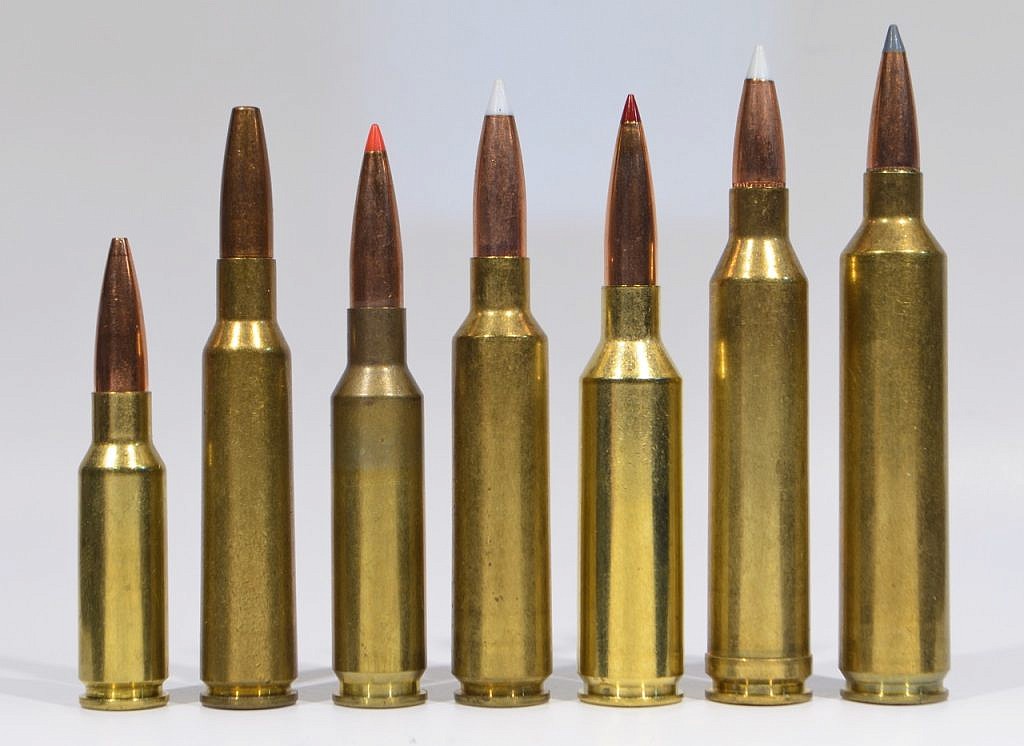
by Terry Wieland
It has been my happy lot for the past week or two to put through its paces the latest wunderkind cartridge to capture the hearts of Americans: Hornady’s 6.5 PRC.
Before you ask, “PRC” stands for “precision rifle cartridge,” and it certainly lives up to its name. From the design of its bullets, to the exacting detail of reloading it — even to the high-tech features of the loading dies themselves — the 6.5 PRC demands considerable ballistic sophistication at every level to realize its substantial capabilities.
The 6.5 PRC was introduced in 2017, and is slightly more powerful and capable of slightly more range, than Hornady’s 6.5 Creedmoor, which has taken the shooting world by storm — sorry for the cliché — and now enjoys a cult of personality to rival Josef Stalin’s. According to some devotees, the 6.5 Creedmoor can reach beyond the horizon, flick the tiniest fly off the face of a target farther than the eye can see, recoils less than a maiden’s caress, and…well, you get the idea.
In fact, ballistically, with a 140-grain bullet leaving the muzzle at 2,690 feet per second, the Creedmoor will not do a thing that can’t be accomplished by the 6.5×55 Swedish (née 1894) and a half dozen others introduced in that same era. The 6.5 PRC improves on that by about 250 fps (143 grains, 2,960) — on paper, at least. I chronographed some of Hornady’s factory ammunition using a Blaser R8 with a 25.5-inch barrel (barrel length is always a consideration) and got 2,824 fps.
Back in 1990, preparing to hunt Dall sheep in Alaska, I tuned my Parker-Hale 6.5×55 to get 2,850 fps with a 140-grain Nosler Partition from a 22-inch barrel, chronographed on an early Chrony. Even allowing for some degree of error, that puts the vaunted PRC in the same league as the ancient 6.5×55.

For those who set great store by muzzle velocity, all of these are easily out-distanced by the Big Three: the .264 Winchester Magnum (1958), .26 Nosler (2013), and 6.5-300 Weatherby (2016, in factory form, anyway.) I expect the 6.5 Remington Magnum (1966) would match them easily, as can the .260 Remington (1996).
As you can see, arguing about the ballistic capabilities of any of these (except the Big Three) is akin to debating how many angels can dance on the head of a pin. (Sorry, another cliché.) In practical hunting terms, it makes absolutely no difference.
What both the 6.5 Creedmoor and the 6.5 PRC have that the others don’t is a complete absence of encumbrances. They have no ancient baggage that prevents ammunition companies loading them to their potential, and no industrial standards, written or otherwise, to hold them back. To give just one example, the 6.5×55 has always been loaded to modest levels because any factory ammunition has to be safe in an 1894 Swedish Mauser, or any number of rifles, built on questionable actions, that have “6.5×55” stamped on the barrel.
Working with a clean slate, Hornady could dictate every specification, from maximum chamber pressures to rate of twist to maximum overall cartridge length. You’d be surprised how many otherwise good cartridges have been hampered by a maximum allowable length that limits them to bullets that are too light because heavier bullets encroach on the powder capacity and reduce velocity.
The single feature that made the various 6.5s so popular in Europe for so long is their long-for-caliber bullets (typically, 140-160 grains) that have superb sectional density and hence penetrate deeply. Combine this with modest recoil and excellent accuracy, and you have great hunting cartridges. Professional hunter Werner von Alvensleben, shooting on control in Moçambique, killed more than a thousand Cape buffalo with his Mannlicher 6.5×54, and W.D.M. Bell used a similar rifle on elephants, although he later came to prefer the 7×57 in a Mauser action.
In velocity-mad America, from the 1930s on, these virtues were disdained. Only fairly recently has the long-range potential of long-for-caliber bullets in target shooting been widely recognized here. In England, Sir Charles Ross recognized it in 1910, when he loaded his .280 Ross with bullets up to 180 grains. Sir Charles certainly cared about velocity, and the .280 Ross was the first factory cartridge to break the 3,000 fps barrier, but for the long ranges at Bisley he loaded heavy bullets that bear an uncanny resemblance to the ultra-sophisticated, heavy, low-drag, ballistically stellar match bullets of today.
Having sifted through all this, though, I have to conclude the 6.5 PRC is a hell of a cartridge. It won’t do anything the .270 Winchester won’t do, given all the same advantages of modern bullet design, tight twist rate, and so on, but that’s the thing: You can’t get a .270 with all those advantages — not as a factory rifle/cartridge combination, anyway.
Since you can now pick up a 6.5 PRC barrel to put on that Blaser R8 you already own, the combination is irresistible.
–––––––––––––––––––––––––––––––––––––––––––––––––––––––––––––––––––––––––––––––––––––––––
Shooting editor Terry Wieland no longer has that Parker-Hale 6.5×55 he took to Alaska so long ago. The silver lining is, there is hence no logical common-sense argument against him buying the 6.5 PRC barrel for his R8. Obviously, he needs it.
